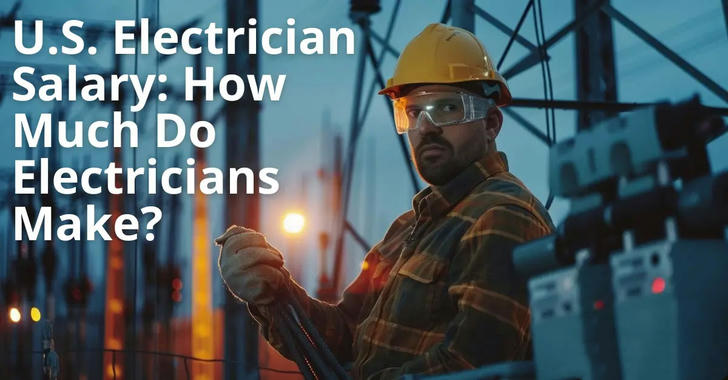American electrician recruitment: job responsibilities, training, salary and foreign worker policy
In the United States, electrician is a technical profession with stable demand and good salary, suitable for people who are interested in developing in the blue-collar technical industry. The following is a detailed article on the recruitment of electricians in the United States, covering job responsibilities, how to become an electrician without experience, whether paid training is provided, electrician salary and benefits, whether foreign electricians are accepted, and related real cases

1. Electrician Job Responsibilities
Electricians are key technicians in maintaining and installing electrical systems in the United States. Their work involves many aspects, mainly including:
Formulate and implement maintenance plans for electrical equipment in factories or buildings to ensure the normal operation of equipment;
Check and maintain the integrity of electrical equipment, and conduct regular inspections and cleaning;
Timely discover and eliminate electrical faults to ensure the safety of production or living electricity;
Responsible for the inventory management of electrical consumables to ensure sufficient safety inventory;
Record and manage meter data to keep accounts clear;
Strictly abide by operating procedures, cooperate with other technicians such as machine repair to ensure the normal operation of equipment;
Check safe electricity use and promote the implementation of energy-saving and emission reduction measures.
Electrician positions are divided into junior, intermediate and senior levels. Work experience and skill level determine the job level and scope of responsibilities.
2. How to become an electrician without experience?
In the United States, becoming an electrician usually requires systematic training and obtaining a license. The specific paths include:
Apprenticeship training: Most electricians learn electrical theory, safety regulations and practical operation skills through apprenticeship or vocational school. During the apprenticeship period, they are usually guided by experienced masters to accumulate practical experience.
Accumulate work experience: During and after training, apprentices need to continuously improve their skills in actual work and become familiar with various electrical equipment and construction specifications.
Licensing examination: After completing the training, you need to pass the electrician license examination organized by the state or local government. The examination content covers electrical theory, the National Electrical Code (NEC) and practical operation.
Background check: Some areas require background checks to ensure that the applicant has good character.
Choosing a reputable training institution and understanding the specific practice requirements of the state are the keys to successfully becoming an electrician.
3. Is paid training provided?
Many electrician apprenticeship training programs in the United States are paid. Apprentices not only receive professional training during their studies, but also receive a certain salary, which depends on the region and employer. Paid training helps inexperienced people learn skills while reducing financial pressure and quickly accumulating work experience. Some unions and large companies also have special training funds to support the growth of apprentices and novice electricians.
4. Salary of Electricians
Electrician have competitive salaries in the United States, and their salaries increase significantly with experience:
The average annual salary is about $60,370, or about $29 per hour;
Electricians with less than 1 year of work experience have an annual salary of about $35,170;
Experienced electricians (more than 10 years) can earn an annual salary of $73,000 or even higher;
There are obvious regional differences, with the average salary of electricians in California reaching $80,440, while in Florida it is about $39,380;
Salaries vary between industries, with higher salaries in the electrical installation industry and relatively lower salaries in the welfare service industry;
Overtime, night shifts, and high-risk jobs usually enjoy higher salaries.
In addition, the electrician profession is increasingly favored by young people due to its technicality and stability. Many young electricians share their work experience through social media to enhance the image and attractiveness of the industry.
5. Are foreign electricians accepted?
The United States welcomes qualified foreign electricians, but hiring foreign employees involves complex visa and legal procedures:
Employers need to apply for work visas for foreign electricians. Common visa types include H1-B (professional and technical personnel), H2-B (non-agricultural temporary workers), L1 (multinational company transfer employees), etc.;
To apply for a visa, the company needs to provide sufficient supporting materials to show the necessity and investment strength of hiring foreign employees;
The visa application process may take weeks to months, and there is a risk of rejection;
A foreign electrician holding a work visa is not equivalent to permanent residency, and becoming a US citizen requires a long review and application;
Companies usually need to prove that the local labor market cannot meet job requirements before applying for a foreign worker visa.
VI. Related real cases
Young female electrician Lexis Czumak-Abreu: Only 27 years old, she works in water and electricity in California. She shares her work content through TikTok and attracts millions of fans, showing the modern charm and high salary potential of the electrician profession.
23-year-old California plumber Evan Berns: He shows his daily work through social media and gets a lot of attention, reflecting the popular trend of blue-collar occupations among young people.
New York State Offshore Wind Power Training Project: In 2024, the New York State government will allocate funds to support offshore wind power vocational training, promote the growth of electrician positions in the clean energy field, and reflect the diversification and future development potential of the electrician profession.
